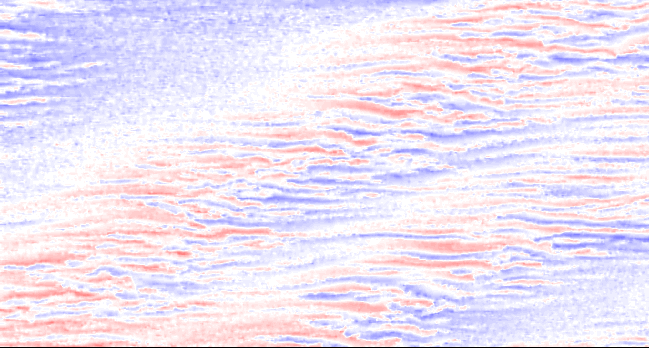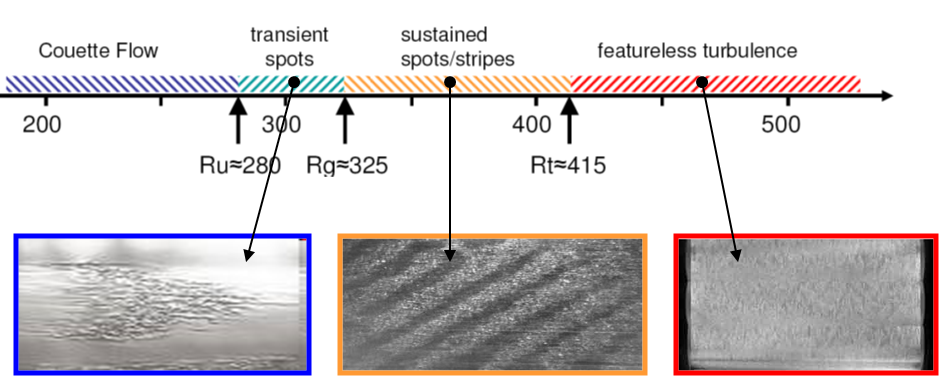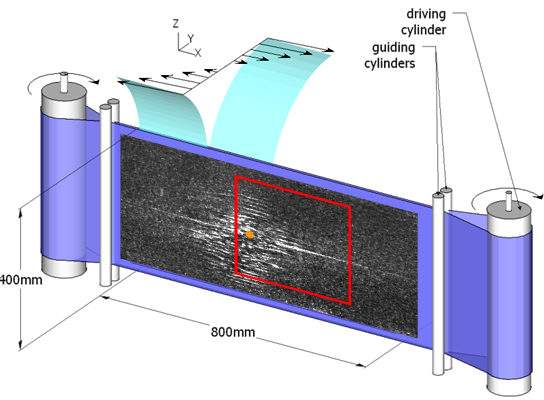Transition to turbulence in Couette flow
According to linear stability theory, flows presenting an inflection point in their velocity profile are destabilised via supercritical scenarios and turn turbulent at some finite value of the control parameter. On the other hand, “non-inflectional” flows are usually linearly stable up to large Reynolds number. In spite of this, they often experience complex transitions to turbulence at moderate Re involving the coexistence of laminar and turbulent domains in sub-critical scenarios. Plane Couette flow (pCf) and pipe Poiseuille flow (pPf) belong to this last category and are thus subject to many studies.
 PIV measurements in our experiment.
PIV measurements in our experiment.
Related publications
Phys. Rev. Fluids, 3(12), 123901 (2018)
J. of Fluid Mech., 819, 1-20 (2017)
Phys. Rev. E, 93, 013108 (2016)
Phys. of Fluids, 27, 034101 (2015)
Collaborators
Marie Couliou, ENSTA
Paul Manneville, LADHYX
Yohann Duguet, LIMSI
Wang Zhe, NTU
A complex behaviour
As illustrated on the transition diagram below, plane Couette flow experiences a complex transition to turbulence involving a regime of laminar-turbulent coexistence for intermediate Reynolds numbers. This coexistence can take the form of complex spatio-temporal dynamics and even of organised stripe patterns as shown on the picture. The mechanisms responsible for this coexistence are still unclear in spite of the recent numerical renew of interest for this issue.
 Plane Couette flow transition diagram.
Plane Couette flow transition diagram.
A difficult experimental set-up:
The plane Couette flow ideally takes place between two infinite plates moving at the same velocity in opposite directions. Experimentally, this can be achieved by rotating a belt as sketched on the figure below when the gap is small compared to the other dimensions. Nevertheless, the experimental realisation is tough and has to be done very carefully to avoid as much as possible unexpected noise induced transition to turbulence. To date, only two systems have provided accurate measurements, the one built in KTH Stockholm (Sweden), and the one from François Daviaud's team at CEA Saclay (France).

Sketch of the experimental set-up.
© Romain Monchaux
Template design by Andreas Viklund